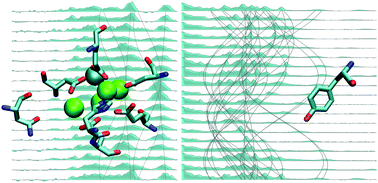Electronic structure of the tyrosine D radical and the water-splitting complex from pulsed ENDOR spectroscopy on photosystem II single crystals†
Abstract
Pulsed

- This article is part of the themed collection: Modern EPR spectroscopy: beyond the EPR spectrum

 Please wait while we load your content...
Please wait while we load your content...